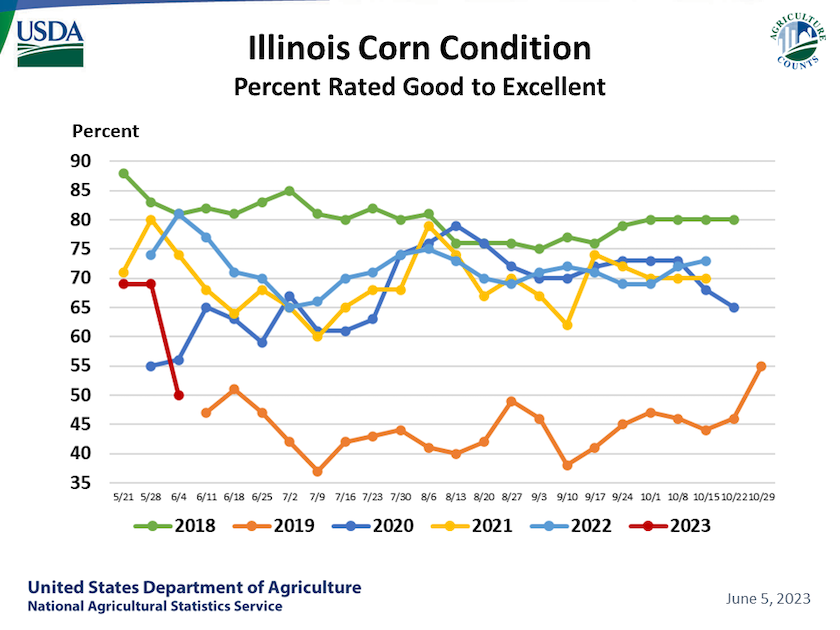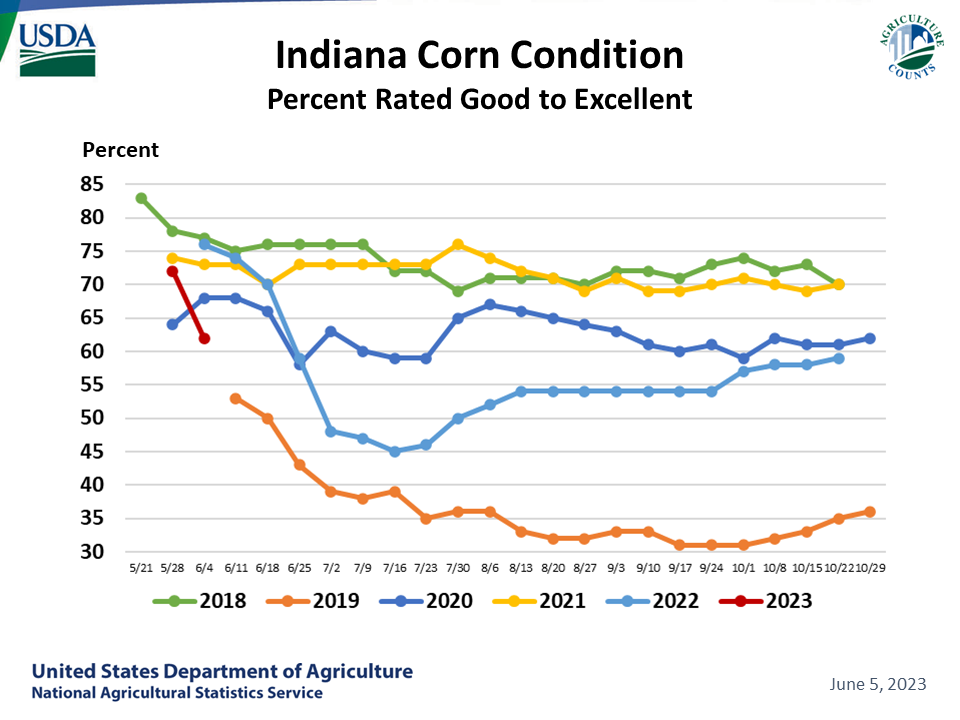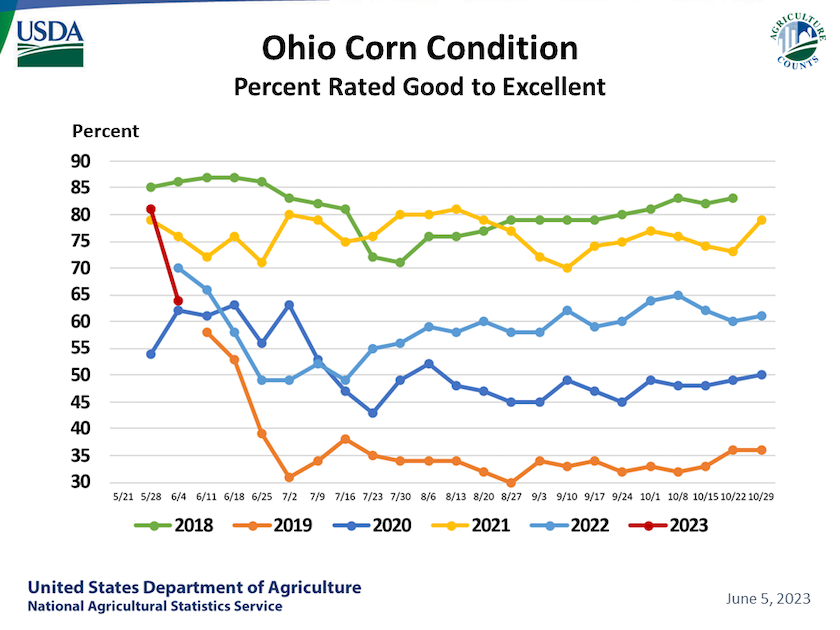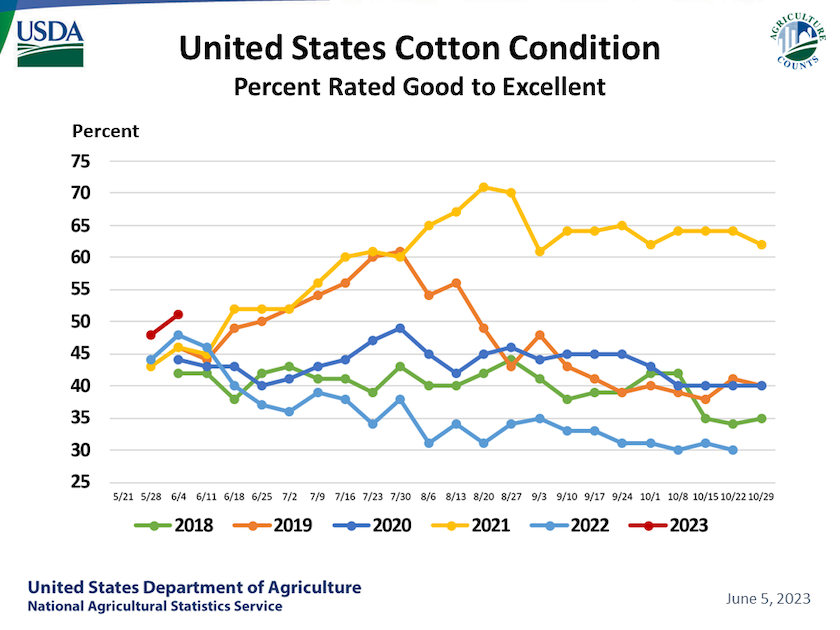Drought Watch: Nearly Half of the U.S. Corn Crop is Now Covered in Drought
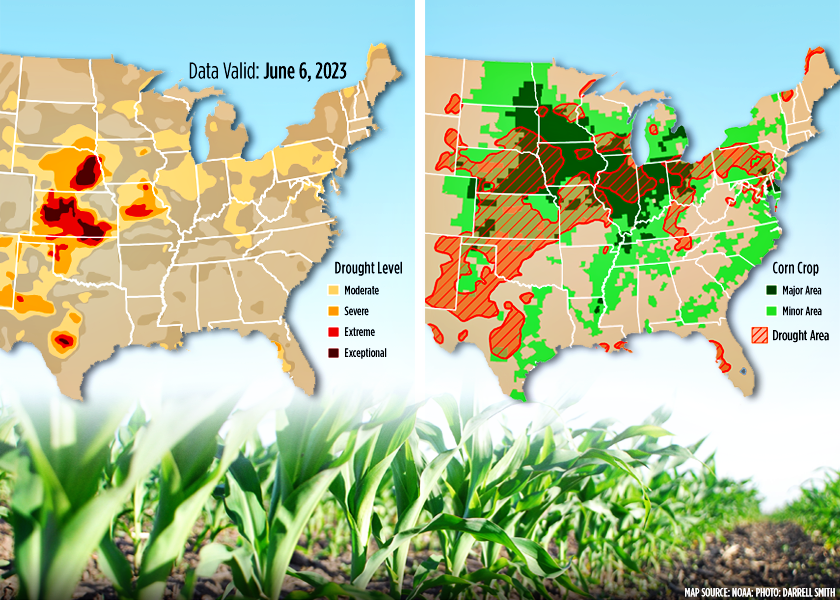
Drought continues to expand its grip across the Corn Belt. Last week, 34% of the U.S. corn crop was covered in drought, and this week it jumped to 45%. The second crop conditions ratings of the season from USDA-NASS confirmed dryness is starting to deteriorate crop conditions.
It's not just the corn crop being hit by expanding drought conditions, but also soybeans. USDA and the National Drought Mitigation Center indicates 39% of the U.S. soybean crop is also in drought, which is an 11-point jump in a week's time.
The latest U.S. Drought Monitor shows 54% of the continental U.S. is experiencing D0-D4, which is exceptionally dry to exceptional drought conditions. The bright spot of the updated drought picture might be the area considered to be in exceptional drought, which is the highest level of drought rating, saw a slight decline. 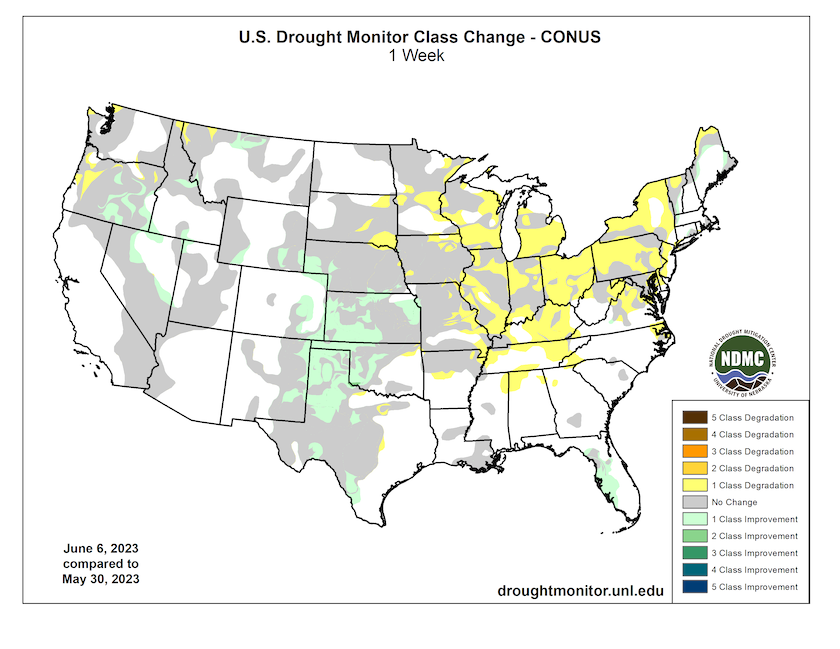
Nationally, USDA-NASS says crop condition ratings experienced a five-percentage-point drop, but the sharp decline in conditions across eastern Corn Belt states was the most notable change in this week’s ratings with Illinois seeing a 19-percentage-point drop in its good to excellent rating for corn.
Other noticeable declines in ratings include:
- Illinois: 50% good to excellent vs. 69% last week
- Indiana: 62% good to excellent vs. 72% last week
- Ohio: 74% good to excellent vs. 81% last week
- Missouri: 46% good to excellent vs. 55% last week
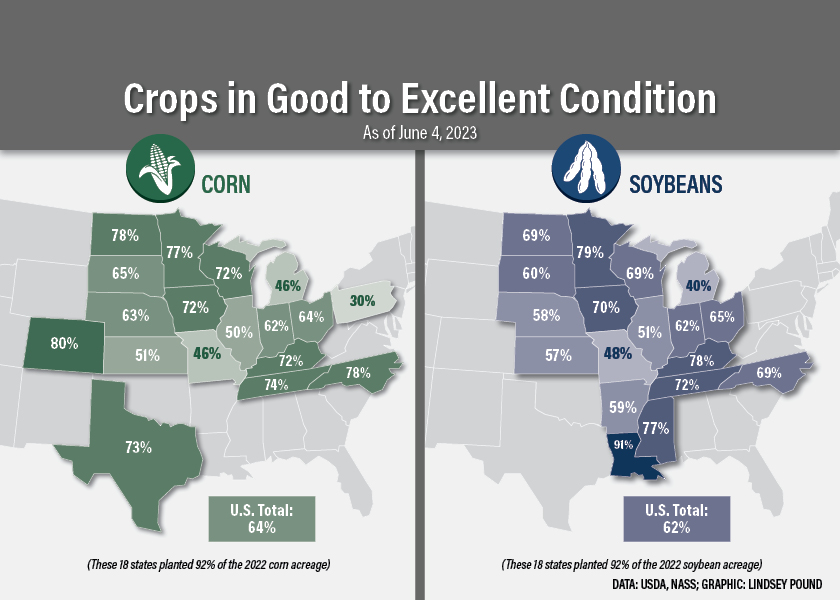
As drought continues to broaden its footprint east, USDA-NASS says crop reporters cited it as the main reason ratings took such a large drop this week.
“The lack of recent rainfall was commonly referenced by reporters across the eastern Corn Belt coinciding with lower reported condition ratings,” says Lance Honig, crops branch chief for USDA-NASS.
Honig says when you look at how the large drop in ratings stacks up historically, it’s similar to only two years ago.
“Although good to excellent rankings nationally for corn started higher in 2021, the drop in the ratings the first couple of weeks was very similar to what we are seeing this year,” he says.
Crop Conditions and Final Yield?
It’s also important to note crop condition ratings this early in the season don’t typically have a correlation to the final yield in the season. However, Honig says watching the trend in changes to crop conditions over time is an important trend to note throughout the season.
“For both progress and condition data, the greatest strength is in the comparisons across time,” Honig says. “The values are based on subjective reports, but reports from the same reporters week after week, and in most cases year after year. So, even though they are subjective, they are consistent and provide accurate comparisons. Knowing that 64% of the corn crop is rated in good-to-excellent condition is important, but understanding that it is five points below the previous week and lower than it was at this time each of the previous three seasons puts it into perspective.”
Drought Improvements in Parts of the Plains
Drought is changing across the U.S., but it's for the better in parts of the Plains hammered by consecutive years of drought. The summary provided by authors of the U.S. Drought Monitor, the highlight was how heavy rains led to widespread improvements to ongoing drought in the western Great Plains. Rains also helped improved drought conditions in the southwest Florida Panhandle. But the authors noted widespread degradations occurred in the Midwest and western portions of the Northeast as not only very dry but also warm weather blanketed the areas.
While the wet weather is hampering cotton planting in Texas, the rains are helping cotton that's already in the ground. USDA-NASS says over half of the U.S. cotton crop is rated good to excellent, the best start to the crop in at least the past five years.
El Niño is Officially Here
On Thursday, the National Oceanic Atmospheric Administration (NOAA) declared the arrival of El Niño. The declaration is based off warmer-than-average sea surface temperatures in the central and eastern Pacific Ocean near the equator. NOAA notes it occurs every two to seven years. NOAA also says El Niño is expected to be moderate-t0-strong by late fall/early winter.
As farmers in Texas face a battle of planting their crops due to the sudden switch of heavy rainfall, USDA meteorologist Brad Rippey says El Niño is not to blame for the recent deluge of rain.
“The signal of a wetter southern great plains is consistent with El Niño, but this is not due to El Niño,” Rippey says.
NOAA expects El Niño's influence on the U.S. to be weak during the summer but more pronounced in the late fall through spring. By winter, NOAA says there is an 84% change of greater than a moderate strength El Niño and a 56% chance of strong El Niño developing.


